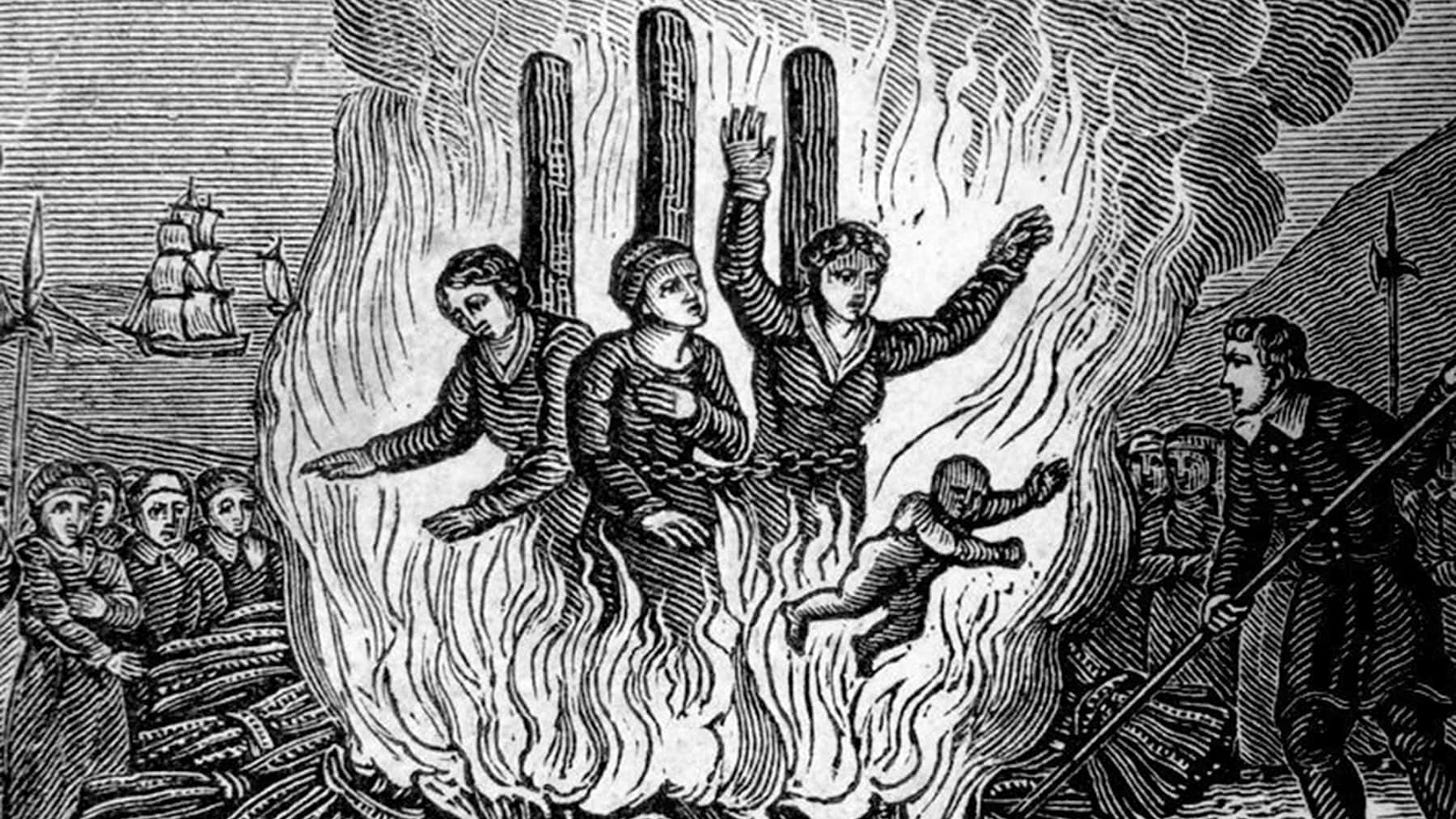Witches, Midwives, and Nurses: A History of Women Healers
by Barbara Ehrenreich and Deirdre English, 1973
“The age of witch-hunting spanned more than four centuries (from the 14th to the 17th century) in its sweep from Germany to England. It was born in feudalism and lasted – gaining in virulence – well into the “age of reason.” The witch-craze took different forms at different times and places, but never lost its essential character: that of a ruling class campaign of terror directed against the female peasant population. Witches represented a political, religious and sexual threat to the Protestant and Catholic churches alike, as well as to the state.
The extent of the witch-craze is startling: In the late fifteenth and early sixteenth centuries there were thousands upon thousands of executions – usually live burnings at the stake – in Germany, Italy and other countries. In the mid-sixteenth century the terror spread to France, and finally to England. One writer has estimated the number of executions at an average of 600 a year for certain German cities – or two a day, “leaving out Sundays. Nine-hundred witches were destroyed in a single year in the Wertzberg area, and 1000 in and around Como. At Toulouse, four-hundred were put to death in a day. In the Bishopric of Trier, in 1585, two villages were left with only one female inhabitant each. Many writers have estimated the total number killed to have been in the millions. Women made up some 85 percent of those executed – old women, young women and children.
Who were the witches, then, and what were their “crimes” that could arouse such vicious upper class suppression? Undoubtedly, over the centuries of witch hunting, the charge of “witchcraft” came to cover a multitude of sins ranging from political subversion and religious heresy to lewdness and blasphemy. But three central accusations emerge repeatedly in the history of witchcraft throughout northern Europe: First, witches are accused of every conceivable sexual crime against men. Quite simply, they are “accused” of female sexuality. Second, they are accused of being organized. Third, they are accused of having magical powers affecting health – of harming, but also of healing. They were often charged specifically with possessing medical and obstetrical skills.
The wise woman, or witch, had a host of remedies which had been tested in years of use. Many of the herbal remedies developed by witches still have their place in modern pharmacology. They had pain-killers, digestive aids and anti-inflammatory agents. They used ergot for the pain of labor at a time when the Church held that pain in labor was the Lord’s just punishment for Eve’s original sin. Ergot derivatives are the principal drugs used today to hasten labor and aid in the recovery from childbirth. Belladonna – still used today as an anti-spasmodic – was used by the witch-healers to inhibit uterine contractions when miscarriage threatened. Digitalis, still an important drug in treating heart ailments, is said to have been discovered by an English witch. Undoubtedly many of the witches’ other remedies were purely magical, and owed their effectiveness – if they had any – to their reputation.
The witch-healer’s methods were as great a threat (to the Catholic Church, if not the Protestant) as her results, for the witch was an empiricist: She relied on her senses rather than on faith or doctrine, she believed in trial and error, cause and effect. Her attitude was not religiously passive, but actively inquiring. She trusted her ability to find ways to deal with disease, pregnancy and childbirth – whether through medications or charms. In short, her magic was the science of her time.
The Church, by contrast, was deeply anti-empirical. It discredited the value of the material world, and had a profound distrust of the senses.
In the persecution of the witch, the anti-empiricist and the misogynist, anti-sexual obsessions of the Church coincide: Empiricism and sexuality both represent a surrender to the senses, a betrayal of faith. The witch was a triple threat to the Church: She was a woman, and not ashamed of it. She appeared to be part of an organized underground of peasant women. And she was a healer whose practice was based in empirical study. In the face of the repressive fatalism of Christianity, she held out the hope of change in this world.”





I wonder if male medicine is designed to heal or to do something else?